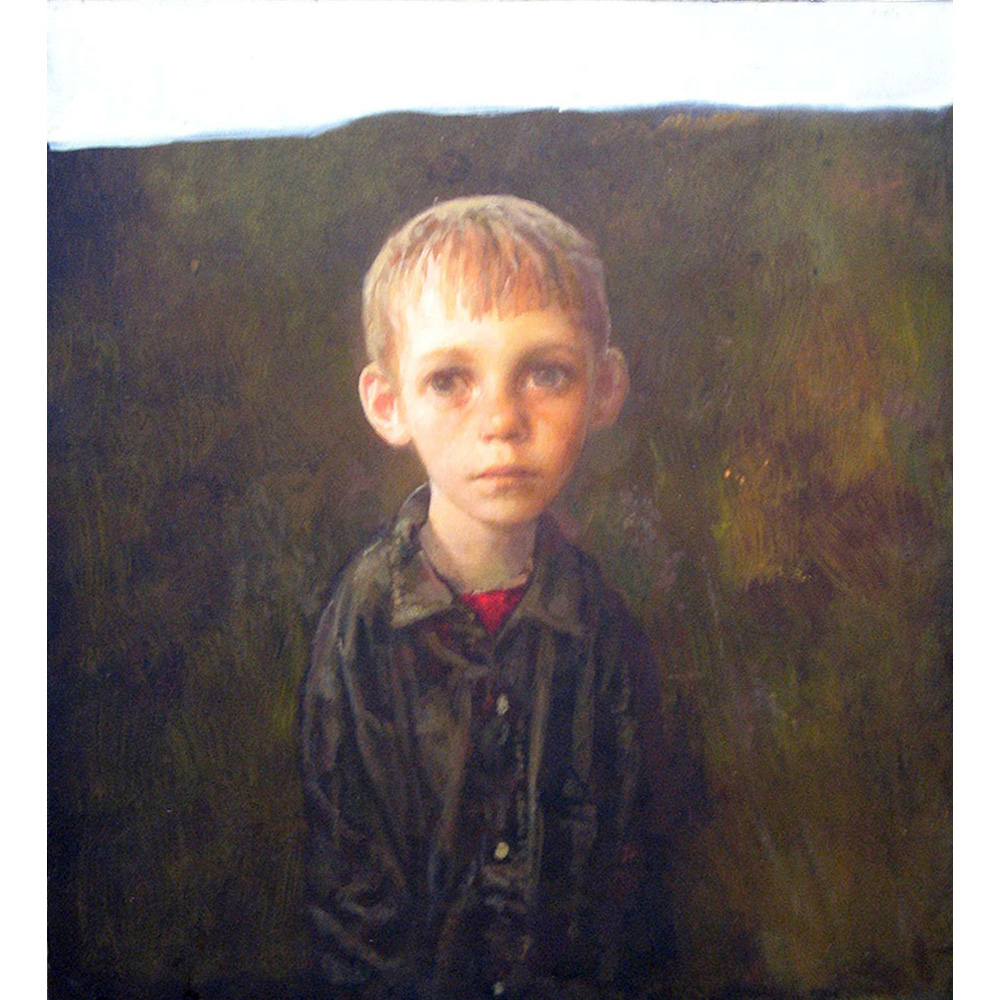Artwork Description
Igor Melnikov – Walk at Sunset
Dimensions: 19.5 x 18.25″ framed / 13.5 x 12.25″ unframed
Year: 2015
Medium: oil on panel
Igor Melnikov’s oil on panel work, Walk at Sunset, exhibits Melnikov’s characteristic use of children as vessels for the viewer; with his ambivalent expression and searching eyes, the young boy both retains his own autonomy through his indecipherable gaze, and acts as a manifestation of the audience’s desires and personal, psychological exploration. The work provokes a series of unanswered questions; is the child merely somber or suffering? Is he alone simply for the time spent looking at the work or indefinitely? Within Walk at Sunset, Melnikov has intentionally left the background formally simple but texturally rich, drawing attention through color contrast to the painting’s central subject matter and suggesting equivocal sensations of isolation and comfort.
Igor Melnikov’s works center about processes of discovery and development. After learning that the black and white images of old master works he looked at as a child were painted in color, Melnikov has oriented his work to allow viewers to attach meaning to the otherwise simple scenes. Many of his paintings portray landscapes and young children—subjects which allow viewers to adapt his visual language into individual understandings. This approach complicates traditional associations between children and innocence, suggesting that Melnikov’s subjects are at once dynamic and open to a broad range of interpretations. Melnikov’s work also focuses on emotion—reworking feelings such as tragedy and happiness. He believes the two coexist, where allowing oneself to experience happiness inexorably makes one vulnerable to tragedy. Within this, Melnikov does not define happiness as mere pleasure; rather, it is something which demands attributes such as courage and touches on wider themes including freedom, dignity, and consciousness. Melnikov’s paintings are collage-like, yet not in the traditional, material sense of the process—instead layering his own psychological explorations onto his understandings of the human condition. While his muted color palettes might appear reductive, they instead focus viewers’ attention on the figures within the work and encourage thorough readings of the detailing that remains visually available.
By Keira Seidenberg, Art History/Gender Studies student, McGill University


